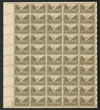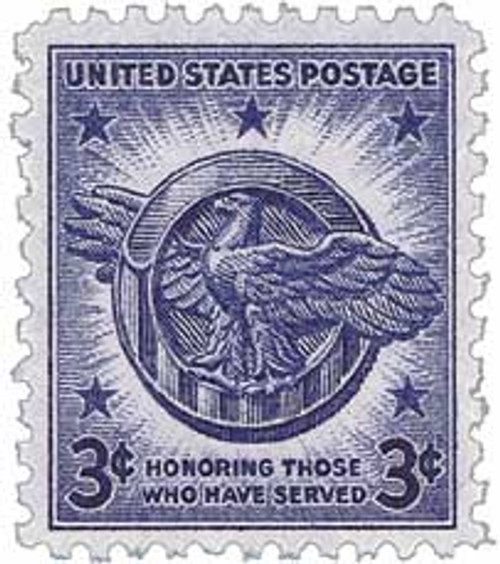
1945 3c US Armed Forces: Army
# 934 - 1945 3c US Armed Forces: Army
$0.35 - $20.00
U.S. #934
3¢ U.S. Army
Armed Forces Series
3¢ U.S. Army
Armed Forces Series
Issue Date: September 28, 1945
City: Washington, D.C.
Quantity: 128,357,750
Printed by: Bureau of Engraving and Printing
Printing Method: Rotary Press
Perforations: 11 x 10.5
Color: Olive
City: Washington, D.C.
Quantity: 128,357,750
Printed by: Bureau of Engraving and Printing
Printing Method: Rotary Press
Perforations: 11 x 10.5
Color: Olive
U.S. #934 was issued to recognize the achievements of the U.S. Army during World War II. The stamp pictures a procession of troops in front of the Arc de Triomphe in Paris as six bombers pass overhead. The arc was constructed in the early 1800s to honor all those who fought for France, especially during the Napoleonic Wars. The arc has served as a popular place for French victory marches over the years, including the French with their American allies in 1944 and 1945.
World War II
World War II killed more people, destroyed more property, disrupted more lives, and probably had more far-reaching consequences than any other war in history. It hastened the fall of Western Europe as the center of world power, and led to the rise of the Soviet Union. The development of the atomic bomb during the war opened the nuclear age.
World War II began when Germany invaded Poland in 1939 and ended when Germany, and later Japan, surrendered in 1945. Military deaths as a result of World War II numbered about 17 million. Also, millions of civilians died because of starvation, bombing raids, massacres, epidemics, and other war-related causes. Battles were fought all over the world: Southeast Asian jungles, North African deserts, Pacific islands, Soviet battlefields, Atlantic beaches, and European streets. The war reshaped the map of Europe and changed the American way of life.
U.S. #934
3¢ U.S. Army
Armed Forces Series
3¢ U.S. Army
Armed Forces Series
Issue Date: September 28, 1945
City: Washington, D.C.
Quantity: 128,357,750
Printed by: Bureau of Engraving and Printing
Printing Method: Rotary Press
Perforations: 11 x 10.5
Color: Olive
City: Washington, D.C.
Quantity: 128,357,750
Printed by: Bureau of Engraving and Printing
Printing Method: Rotary Press
Perforations: 11 x 10.5
Color: Olive
U.S. #934 was issued to recognize the achievements of the U.S. Army during World War II. The stamp pictures a procession of troops in front of the Arc de Triomphe in Paris as six bombers pass overhead. The arc was constructed in the early 1800s to honor all those who fought for France, especially during the Napoleonic Wars. The arc has served as a popular place for French victory marches over the years, including the French with their American allies in 1944 and 1945.
World War II
World War II killed more people, destroyed more property, disrupted more lives, and probably had more far-reaching consequences than any other war in history. It hastened the fall of Western Europe as the center of world power, and led to the rise of the Soviet Union. The development of the atomic bomb during the war opened the nuclear age.
World War II began when Germany invaded Poland in 1939 and ended when Germany, and later Japan, surrendered in 1945. Military deaths as a result of World War II numbered about 17 million. Also, millions of civilians died because of starvation, bombing raids, massacres, epidemics, and other war-related causes. Battles were fought all over the world: Southeast Asian jungles, North African deserts, Pacific islands, Soviet battlefields, Atlantic beaches, and European streets. The war reshaped the map of Europe and changed the American way of life.














